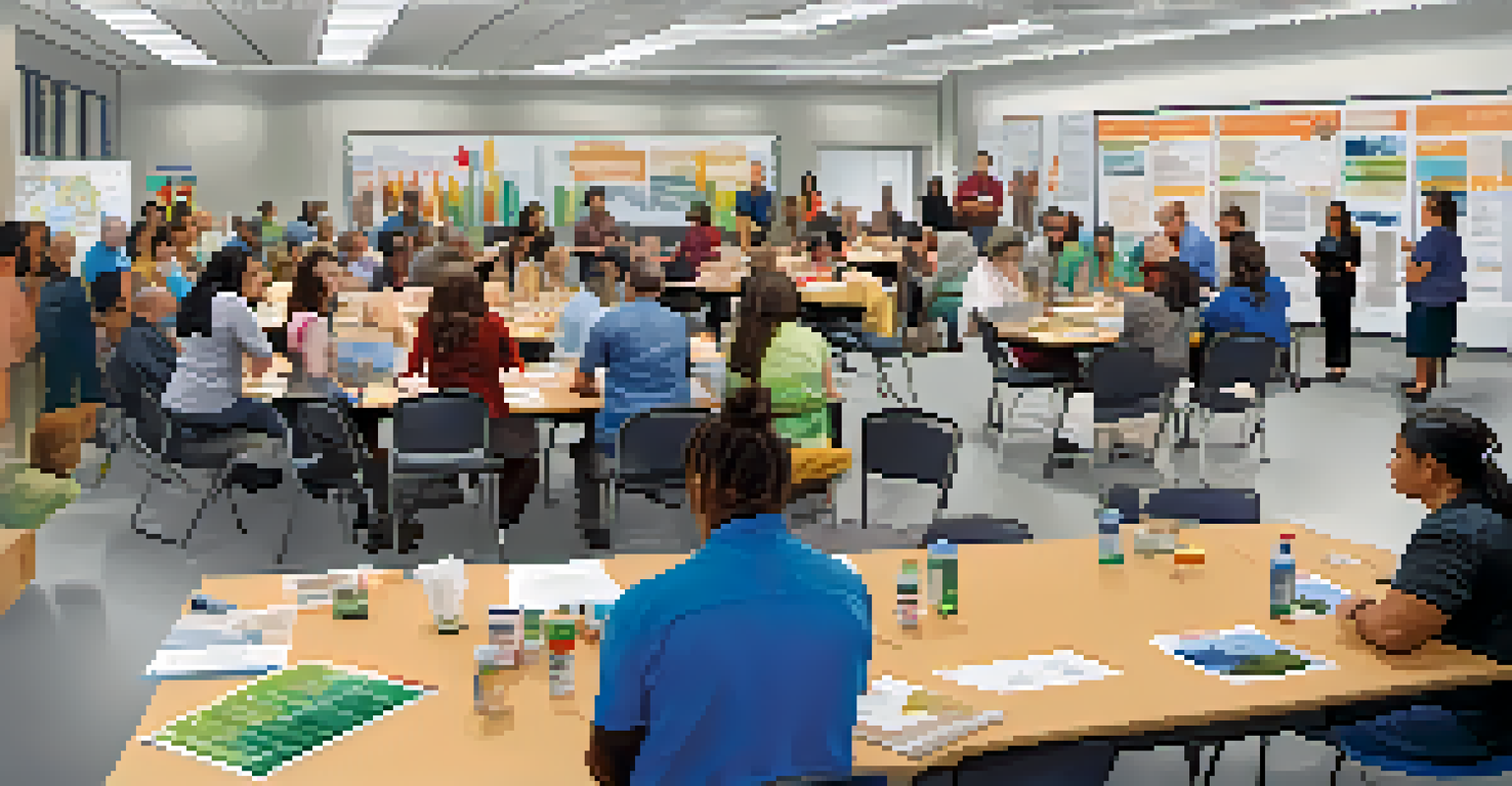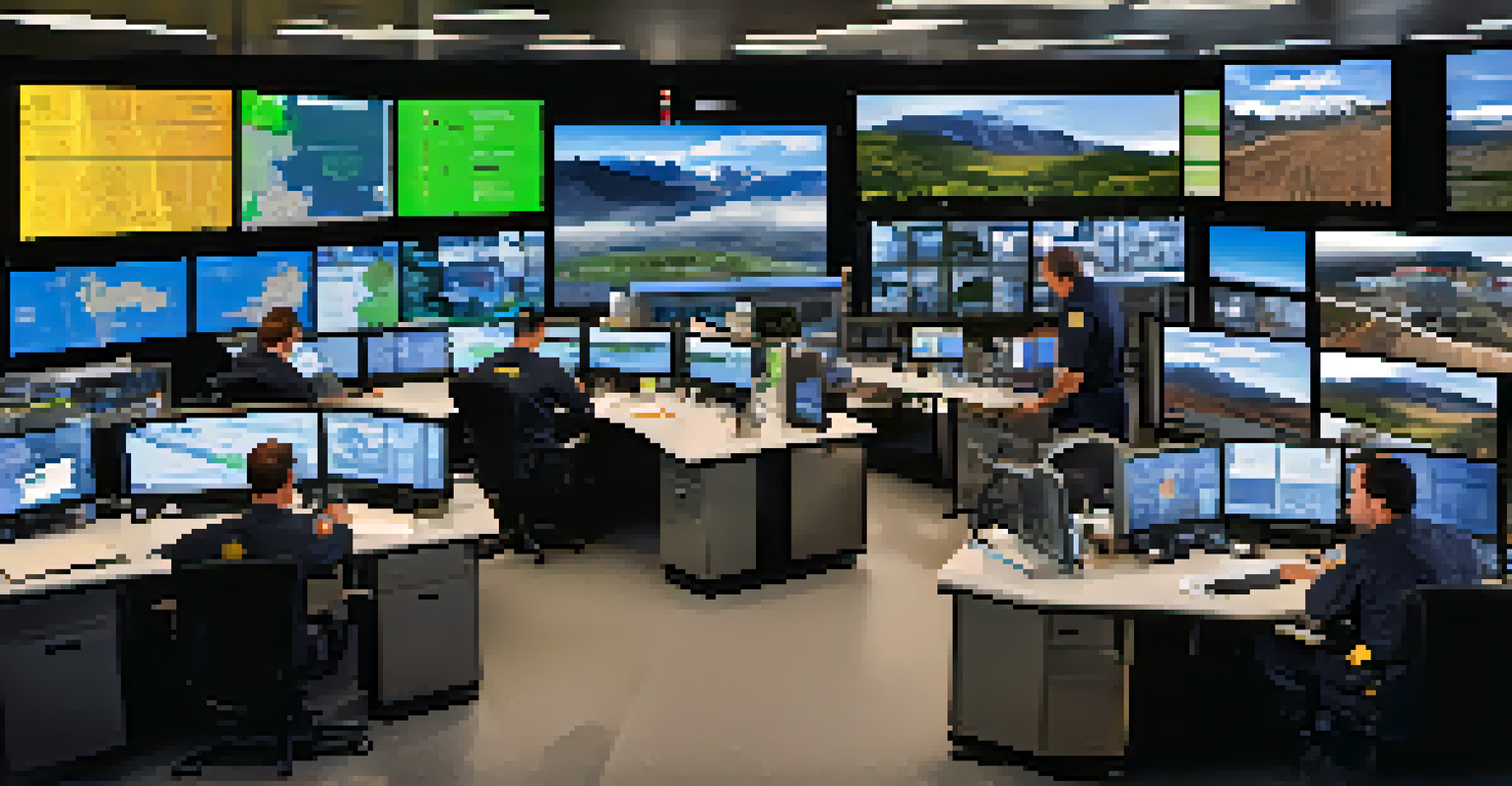State Initiatives for Disaster Preparedness in Colorado

Understanding Colorado's Unique Disaster Risks
Colorado is known for its diverse landscapes, which can lead to a variety of disasters, including wildfires, floods, and winter storms. These risks are heightened by the state's elevation and climate, making it crucial for residents to be aware of what to expect. For instance, the summer months can bring severe thunderstorms, while the winter can lead to blizzards that disrupt daily life.
Disaster preparedness is not just a policy issue; it's a community issue that requires active participation from everyone.
To address these unique risks, Colorado's state government has developed comprehensive strategies aimed at educating the public and enhancing community resilience. This includes regular assessments of potential hazards that could impact different regions of the state. By identifying these risks, officials can better prepare and allocate resources where they are most needed.
Understanding these risks is the first step in disaster preparedness, as it encourages individuals and families to create emergency plans tailored to their specific situations. This awareness can ultimately save lives and minimize property damage when disasters strike.
Emergency Management Agencies in Colorado
Colorado's emergency management framework is primarily coordinated by the Colorado Division of Homeland Security and Emergency Management (DHSEM). This agency plays a vital role in ensuring that the state is prepared for any disaster situation, whether natural or man-made. They focus on a variety of initiatives, including training for local responders and public awareness campaigns.

In addition to DHSEM, local agencies and organizations play crucial roles in disaster preparedness. These agencies work closely with the state to develop tailored plans that reflect the specific needs of their communities. Collaboration and communication between state and local agencies help ensure a unified response during emergencies.
Colorado's Diverse Disaster Risks
Residents must understand unique risks such as wildfires and floods to effectively prepare for emergencies.
Ultimately, these emergency management agencies strive to create a culture of preparedness throughout Colorado. By fostering partnerships with residents, businesses, and local governments, they aim to build a robust support system that can effectively respond to disasters when they occur.
Public Awareness Campaigns for Preparedness
One of the key strategies employed by the state is public awareness campaigns focused on disaster preparedness. These campaigns aim to educate residents about potential risks and the steps they can take to protect themselves and their families. For example, initiatives like 'Get Your Kit, Make Your Plan, Be Informed' encourage individuals to assemble emergency kits and develop communication plans.
An ounce of prevention is worth a pound of cure.
These awareness programs often utilize various platforms, including social media, community workshops, and partnerships with local organizations. By reaching residents through multiple channels, state officials can share vital information and resources that help individuals prepare for emergencies. The goal is to make disaster preparedness a part of everyday life.
Moreover, these campaigns highlight the importance of staying informed during emergencies. Knowing where to find reliable information during a disaster can make a significant difference in response efforts, ensuring that residents receive timely updates and instructions.
Training and Resources for Local Responders
Training local responders is an essential element of Colorado's disaster preparedness initiatives. The state offers a variety of training programs designed to equip first responders with the skills they need to effectively manage emergency situations. These programs cover everything from basic first aid to advanced incident command systems.
In addition to formal training, the state also provides resources and tools to help local agencies enhance their preparedness efforts. This includes grants for purchasing equipment and funding for community drills that simulate disaster scenarios. By investing in local capabilities, Colorado is fostering a more resilient response network.
Community Engagement is Key
Active participation in local preparedness efforts enhances resilience and fosters a supportive network during disasters.
Moreover, ongoing training ensures that responders are familiar with the latest best practices and technologies. This continuous education not only boosts their confidence but also enhances the overall effectiveness of Colorado's emergency response efforts.
Community Engagement in Disaster Preparedness
Engaging communities in disaster preparedness is vital to Colorado's strategy. The state encourages residents to participate in local planning efforts and community drills, which can help build familiarity with emergency protocols. This hands-on experience allows individuals to understand their roles during a disaster and how to best support their neighbors.
Local organizations, such as neighborhood associations and schools, often play a crucial role in fostering this engagement. By hosting workshops and informational sessions, these groups can help residents feel more connected and prepared. Such community-driven initiatives promote a sense of responsibility and collective action in the face of potential disasters.
Ultimately, when communities are actively involved in preparedness efforts, they become more resilient. Stronger social networks can lead to quicker responses during emergencies and provide critical support to those in need.
Statewide Disaster Response Plans
Colorado has established comprehensive disaster response plans that outline how the state will react to various emergencies. These plans are regularly updated to reflect changing conditions and new insights gained from past disasters. They serve as a roadmap for responders, ensuring that everyone is on the same page during a crisis.
These response plans involve coordination among various agencies, including law enforcement, fire departments, and public health officials. By integrating multiple perspectives and resources, Colorado can create a robust framework that is adaptable to different scenarios. This level of preparation is critical in minimizing chaos during actual emergencies.
Investing in Infrastructure Matters
Strengthening infrastructure and technology is crucial for ensuring quick responses and reducing damage during disasters.
Moreover, these plans emphasize the importance of communication. Clear communication channels among agencies and the public are essential for effective crisis management. The state continuously works to improve these channels, ensuring that residents receive timely and accurate information when they need it most.
Investing in Infrastructure for Resilience
Investing in infrastructure is another cornerstone of Colorado's disaster preparedness strategy. The state focuses on enhancing structures, such as bridges and roads, to withstand potential disasters like floods or wildfires. These improvements can significantly reduce damage and ensure that emergency responders can access affected areas quickly.
In addition to physical infrastructure, the state also prioritizes technology upgrades. Implementing advanced warning systems and real-time monitoring can help provide critical information during emergencies. This proactive approach allows for quicker responses and better outcomes in disaster situations.

Ultimately, these investments not only protect communities during disasters but also foster long-term resilience. A well-prepared infrastructure supports economic stability and enhances the overall quality of life for Colorado residents.